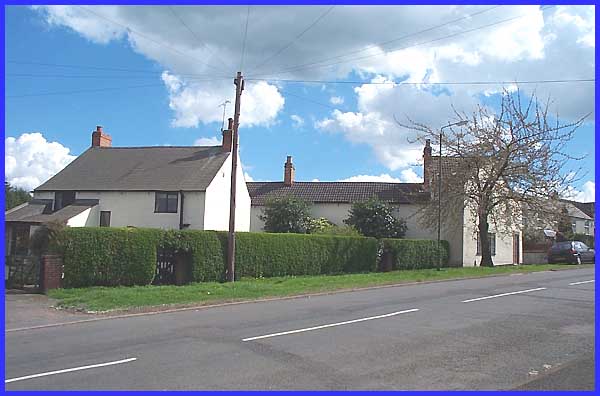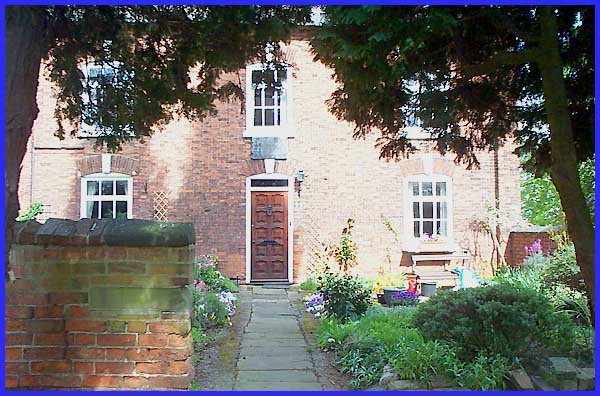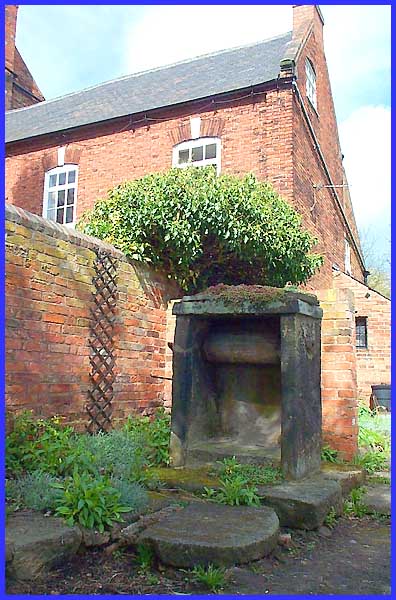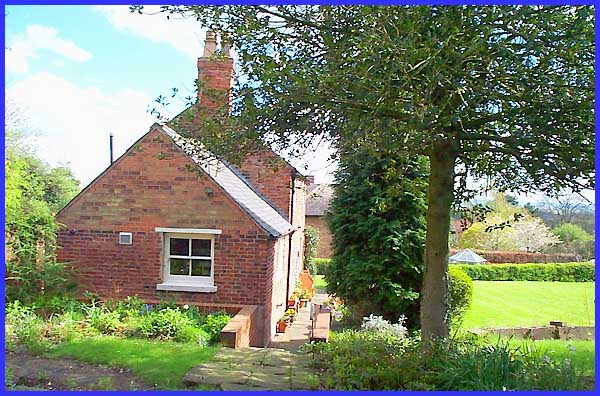Ockbrook - Part 05
- The Houses On The Hill
w/e 25 April
2004
We retrace our
steps back to The Settlement in this part of our exploration
of Ockbrook but first a picture from were we left off in Part 4.
|

Directly opposite the Royal
Oak on Green Lane is a seventeenth century building that was
also a public house called the Prince of Wales. Standing end
on to the road it occupies a plot of land that once would have
belonged to one farmer in the mediaeval open field system. More
recently it has been called Stratford House but to imagine its
appearance in those earlier days, we would have to strip away
all the modern day paraphernalia such as telegraph poles, overhead
lines, lighting columns, television aerials, tarmac roads , motor
vehicles and, of course, even the trees and hedgerows would be
different. Heading back up Green Lane, a right turn by the Cross
Keys leads us back into The Settlement where a narrow path on
the left reveals a row of dwellings known collectively as "The
Houses on the Hill".
|

These were the first houses
to be built on The Settlement, the one in the centre of this
picture, Hillside, dating from 1752. In order to develop his
hosiery business, John Howe moved from Nottingham and occupied
his new house in May of that year but his stay was very brief
as he died later that same month. Another businessman George
Wallis, later rented the house and after his passing in 1800,
the Girls' Boarding School moved in until their own premises
across the road were completed three years later. Ten years later
it was the turn of the Boys' Boarding School to occupy the house
and they stayed there until 1822. Another occupant of note was
Br. Ignatius Montgomery a former Minister of the Moravian Church.
Ignatius, who is buried in the Burial Ground behind the church,
was the brother of James Montgomery a hymn writer whose best known
work is probably "Angels from the realms of glory".
|

Next to Hillside is Highfields but this house was not built until
nearly three-quarters of a century later in 1826. It was built
to house the Provincial Offices of the Moravian Church in England
which it did for the next fifty years when expansion required
that the responsibilities were transferred to London.
|

This property, No. 33, was built at the
same time as Hillside in 1752; Highfields filled the gap between
them. The plaque above the door reads "Joseph and Mary Horsley
1752. Bless our going out O God, when we come in also bless us.
Amen". There is a very interesting story about a later occupant
of this house. After twenty years as missionaries in Jamaica,
Br. Jacob Planta, a Swedish surgeon and apothecary, and his wife
created a shop for his medicines after their return to Ockbrook
in 1780. They moved into this house in 1784 but three years earlier,
Br. Planta had inoculated two girls and two Single Sisters following
an outbreak of smallpox. Later outbreaks of the disease resulted
in no deaths among the congregation of the Moravian Settlement.
History now credits Edward Jenner with the discovery of vaccination
against smallpox fifteen years later in 1896. The Planta's graves
can be found in the Burial Ground in Ockbrook.
|

Between Nos. 33 and 35 is the site
of one of the many wells that were dug on The Settlement. Being
dug near the top of the hill, the search for water was often
difficult. Those that found it at a depth of 9 yards (approx
8m) were very fortunate as many wells were two or three times
that depth.
|

Beyond the well is No. 35 which like No.
33 was built for Joseph Horsely and his wife and later taken
over by the Plantas after being used as a school between 1778
and 1784. In 1992 the semi-derelict cottage was completely renovated
and together with Nos. 29 and 33 remains a tenanted property
of the estate.
|

